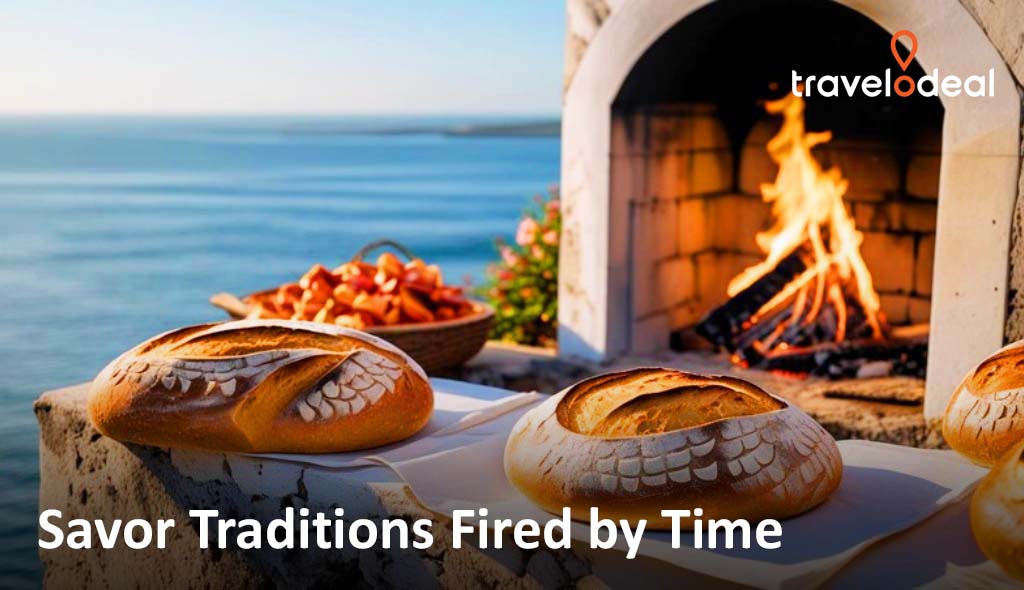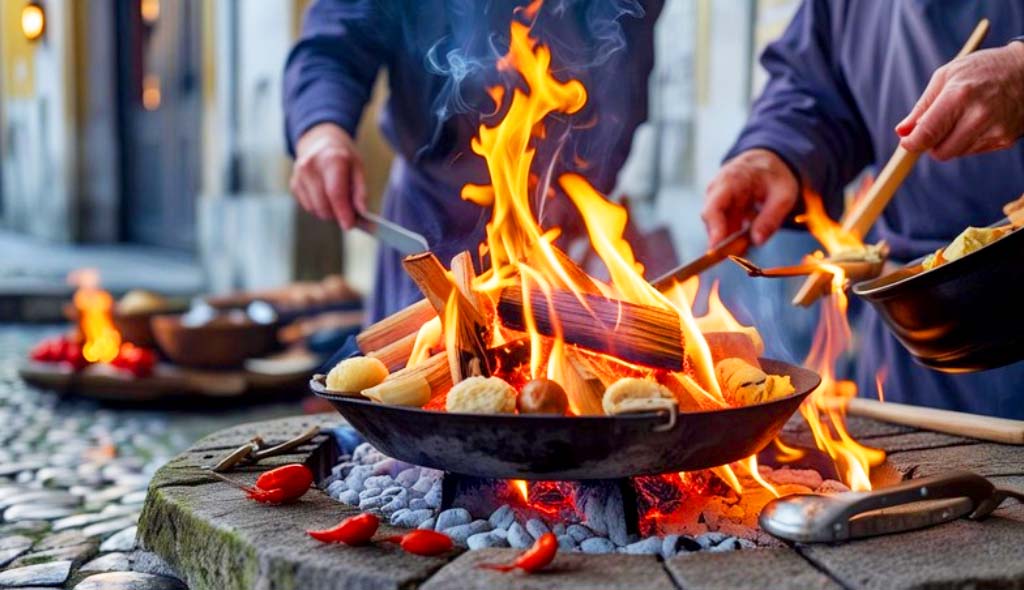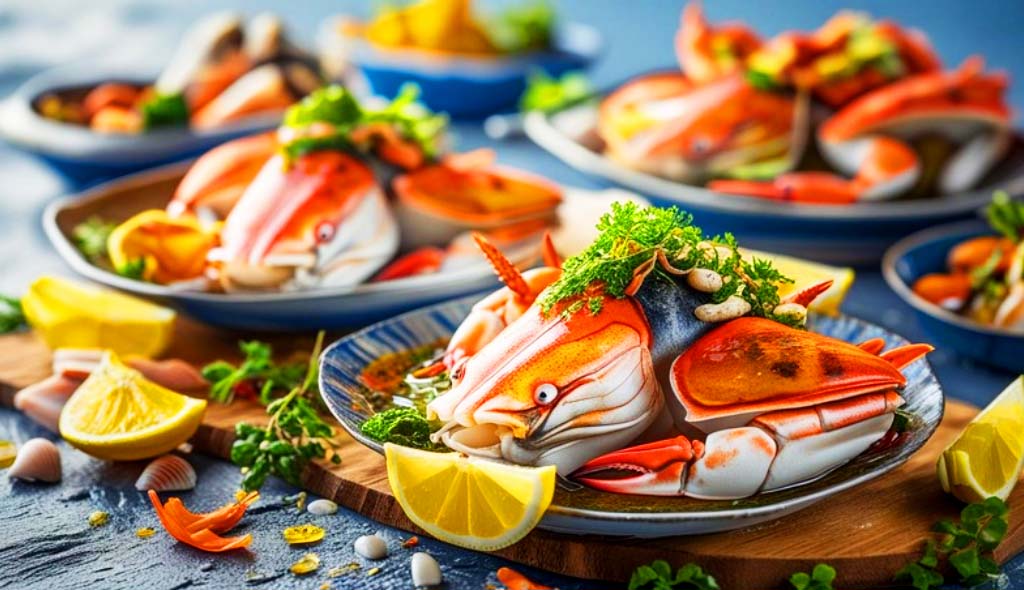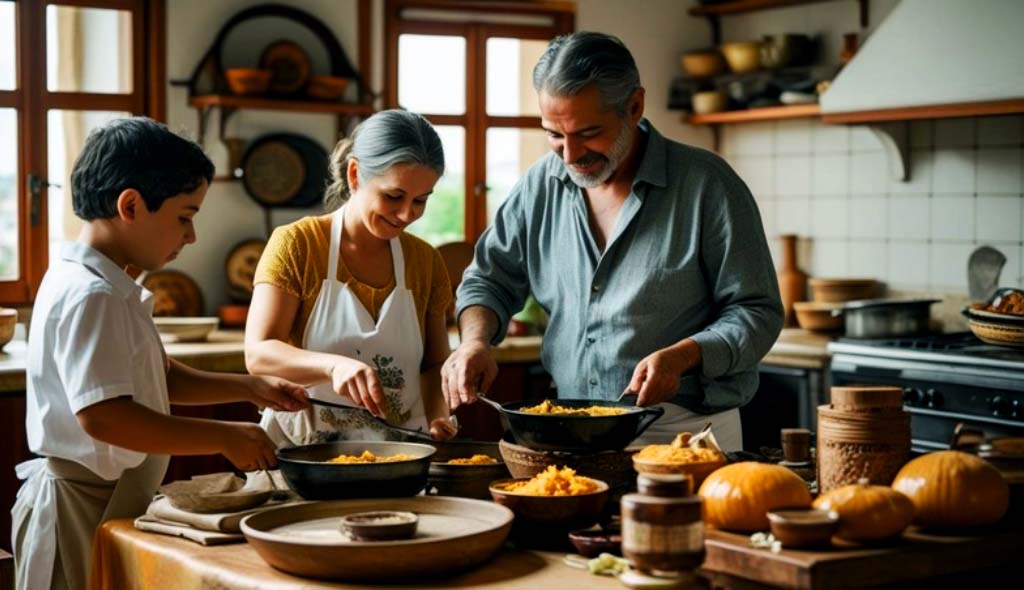Bread, Fire, and Sea: Portugal’s Most Ancient Cooking Traditions Still Alive Today

Bread is vital to food in Portugal because it stands for the past and for togetherness. Portugal has always relied on bread because it became a staple soon after grains were first cultivated long ago. As years have passed, breads have appeared in different styles, mirroring what is grown and baked where they were made.
Pão de milho or corn bread, is a typical food you’ll find mainly in the north of Brazil. As cornmeal is chiefly used to make it, this bread lets visitors enjoy the agricultural background of Portugal food. People in several communities still choose wood-fired ovens for their baking because they make the bread taste unique.
Asides from this, traditional baking is an important part of Portuguese culture. In many places, people gather to bake bread which helps bring and preserve their shared heritage. Thanks to this, we protect old traditions and bring people in the community closer.
Anyone on trips to Portugal should explore its bread, as it gives a great look into how the people enjoys its food. You’ll have a better food experience in Portugal if you both taste local bread and join in on traditional baking. Travelodeal can show you how to enjoy the culinary treasures of India when you learn about its culture.
The Role of Fire in Traditional Portuguese Cooking Techniques

Smoking, roasting and grilling have long shaped Portuguese cuisine which uses fire as its main cooking method. Portugal food does more than give them strength; it is a way to highlight the country’s culture and traditions, shown often by cooking with wood-fired ovens and grills that families have used for generations.
The Portugal national food cooks in a wood-fired oven, giving it a strong flavor no one else can match. For baking bread and roasting meats, this technique is used a lot. Food is made this way that gathers families together, providing a community meal experience.
With traditional Portuguese cooking, one thing people do is grill seafood on an open flame. When you come across fresh anchovies and octopus by the coast, you should try grilled to taste the most. By using these methods of chargrilling, the freshness of seasonal Portuguese ingredients becomes clear.
Traditional cooking techniques can add great memories to anyone’s Portugal vacation. No matter if someone dines in a tavern or enrolls in a cooking class based on these ancient principles, visitors learn how fire helps make the food in Portugal what it is.
Seafood: The Heartbeat of Portugal’s Coastal Cuisine

The around-the-coast food in Portugal is full of seafood which represents Portugal’s history in the seas and its gay cooking habits. The large number of fresh fish and shellfish found along its coast has influenced a range of favorite seafood dishes known to both locals and tourists.
While many dishes feature salt cod, also called bacalhau, it’s an ingredient strongly associated with Portugal food You’ll find tilapia in countless ways to prepare it and there is a local touch that distinguishes each region. There are lots of recipes using cod, including Bacalhau à Brás which is easy to make or Bacalhau com Natas, served up with creamy sauce and cooked in the oven.
Communities all over Portugal depend on fishing for their main source of work and have done so for many years. Seasonal patterns help guide fishermen so they can keep practices sustainable and provide new seafood to small local businesses. By respecting when produce is in season, restaurants around the country make their meals taste better and help local communities.
Many Portugal vacation packages include chances for visitors on gastronomy tours to have fresh seafood while studying local methods of fishing in coastal cities. Anywhere you visit a market or restaurant in Portugal, whether it’s summer or winter, you’ll discover something special about the local cuisine.
Preserving Ancient Recipes: How Families Keep Traditions Alive Across Generations

Food in Portugal means enjoying history, culture and the bonds families share as well as sustenance. Families everywhere value saving age-old family recipes, so their culinary traditions continue to live on for many years. Many of these traditional dishes explain where we come from and highlight the unique food from every area of the country.
Today’s cooking in Portugal follows traditions using local ingredients and what’s in season and each meal highlights a part of the country’s unique life. Dish choices like Bacalhau à Brás and Caldo Verde both represent what Portugal national food is really about. While cooking family meals together, people tell stories linked to every dish and teach the children in the family useful skills.
Family meals are a key part of a culture’s past, so saving favorite recipes matters a lot to many households. Through this practice, people help their children know and appreciate the flavours of the family’s culture. Even if it’s making Pastéis de Nata together or swapping memories about festive harvest feasts, these moments help make family bonds that hold up over many years. Because of this, Portugal food help to maintain family customs and celebrate Portugal’s culture.
The Influence of Regional Variations on Portuguese Cooking Traditions

Portugal food is made up of many regional dishes which both add and maintain unique customs to the country’s food culture. There is a big difference between northern cooking and southern cooking which depends on both locale and ingredients.
Hearty dishes are most common when you go north through Portugal. Essentially, the food is flavorful, usually made with potatoes, beans and different meats. “Francesinha” is the name of a famous example; it’s a rich sandwich of cured meat and a spicy tomato sauce. The region is famous for its shrimp and scallops, thanks to its easy access to the Atlantic Ocean—cod is also found in food in Portugal.
Instead, the south of the country focuses on Mediterranean-influenced ways of cooking. The Algarve area is famous for displaying its vegetables and seafood simply to make their natural taste stand out. A traditional dish from Portugal, “Cataplana de Marisco” uses local shellfish together with interesting herbs and spice to make a seafood stew.
The foods in these regions are shaped mainly by the ingredients nearby. Olive oil from the Alentejo helps give many traditional southerly meals more depth, and it’s just as common for northern recipes to include cheese from Serra da Estrela.
Exploring Portugal national food helps to show that local differences in food create the nation’s identity by celebrating both its past and its places.
Conclusion: Experience the Timeless Flavors of Portugal’s Culinary Heritage—Try These Traditional Dishes Today!

Any food lover who wants adventure should prepare for a culinary journey through Portugal. The nation’s dishes show a history filled with many influences, both from the coast and from the high inland regions. Simply eating either a popular bacalhau dish or sweet pastéis de nata brings you a piece of the country’s culture.
Trying these recipes from the past lets you both enjoy delicious food and explore Portuguese culture and its people. Get together with your loved ones, try eating at nearby restaurants or cook these recipes yourself at home. Experience the heart of Portugal’s dining and let its tastes tour you through the bright shores and typical markets of the region. It’s time to get started on your journey in cooking!

Meet Manjari—a storyteller at heart and a traveller by soul. From cobbled streets to mountain trails, her travel writing captures the heart and history of each destination she visits. With a pen in one hand and a suitcase in the other, she has journeyed across Europe and beyond, always chasing that next untold story. Edinburgh, with its charm and character, is her personal muse. Her blogs promise not just travel tips, but the soul of a destination—told with honesty, curiosity, and a dash of poetry.


